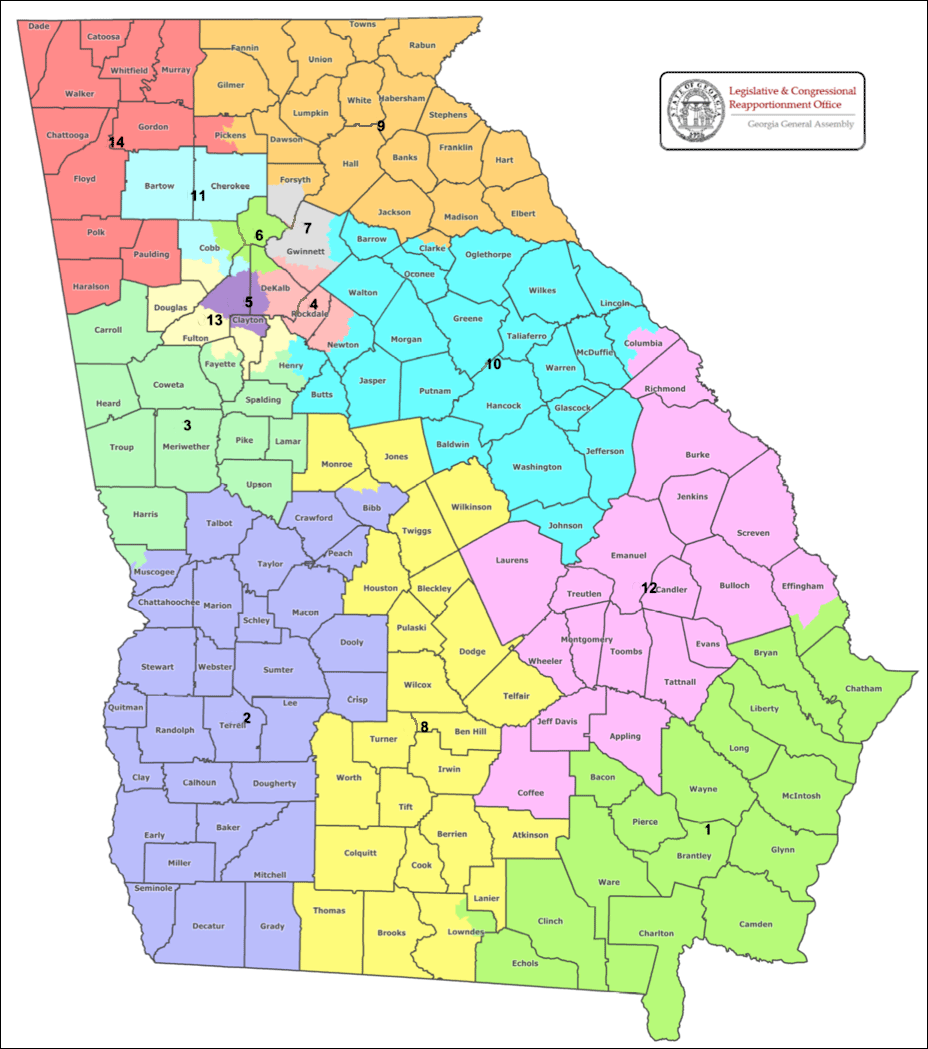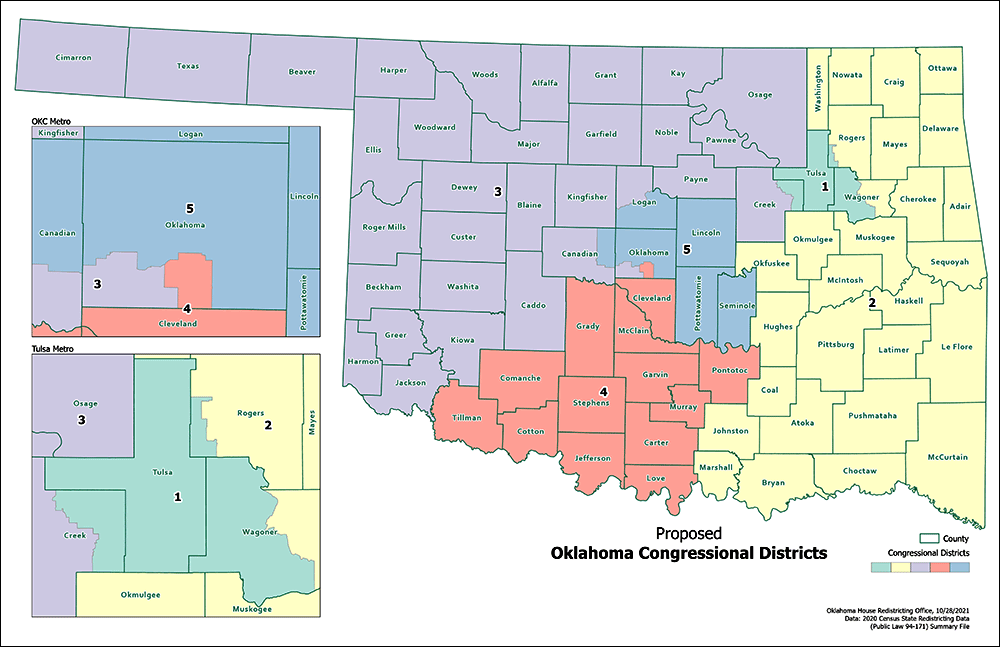By Jim Ellis
Nov. 23, 2021 — The late redistricting season continues to move along at a brisk pace, and two more states are poised to enact new congressional plans this week.
The Georgia state House, after the state Senate passed the proposed congressional map on Friday, was expected to vote on the legislation yesterday and send it to Gov. Brian Kemp (R) for final approval. The Oklahoma legislature, late last week, passed its congressional and state legislative maps in special session and sent them to Gov. Kevin Stitt (R). He is expected to sign the plans into law.
Georgia did not gain a seat in reapportionment despite significant growth in the Atlanta area. In the state’s major metroplex, the congressional districts fully contained within or touching the area counties gained almost 200,000 people dispersed within six districts. The rural CDs, particularly in the southern part of Georgia, however, all needed to gain individuals in order to meet the state population quota of 765,136 individuals per congressional district.
Oklahoma was both a long way from gaining and losing a seat, so the state remains constant with five congressional districts, now three of which come into Oklahoma County, the entity housing the state’s largest metropolis, Oklahoma City.
Currently, the Georgia map stands at 8R-6D, after Democrats converted two seats in the Atlanta metro area in consecutive elections. In fact, the 7th District (Rep. Carolyn Bourdeaux-D), which went from Republican to Democrat, was the only such seat to do so electorally in last year’s presidential election. The two North Carolina districts moving from Republican to Democrat only did so because of a court-ordered late decade redistricting ruling.
The new Georgia map leaves the rural areas in tact when overlaid with the current congressional map, after population adjustments. Rep. Sanford Bishop’s (D-Albany) 2nd District becomes somewhat more Republican, but this seat was the most under-populated congressional domain in the state, requiring an additional 92,108 residents to meet the state quota. Therefore, a significant change was necessary. The remaining rural seats received minor adjustments and all, with the exception of Bishop’s GA-2, will remain in Republican hands.
The big changes come in the Atlanta area, and this is where the Republican map drawers are making a move to take back one of their two lost seats. It appears the 6th District of two-term Rep. Lucy McBath (D-Marietta) will again become strongly Republican, with a major population shift also going into Rep. Bourdeaux’s 7th CD that will concede the district to her and the Democrats.
Eyebrows were raised with changing the 6th District because Rep. McBath is African American and the move will undoubtedly trigger a civil rights lawsuit. Under previous redistricting rulings, however, a district is not judged by the incumbent, but rather whether the controlling minority community elects its candidate of choice.
This is why districts such as Tennessee’s 9th, which is more than 65 percent African American but elects Anglo Rep. Steve Cohen (D-Memphis), is considered a performing district for the dominant minority community because he wins the African-American vote in the majority party primary. The same is true for African-American Congresswoman Maxine Waters (D-CA) in her California district, which has a much higher concentration of Hispanics than blacks.
In the Georgia case, neither the 6th or the 7th CD is a protected civil rights district, and the Bourdeaux seat actually has a larger combined minority population than the adjacent 6th. This largely explains why the map drawers moved to make the 6th more Republican and the 7th more Democratic. There is, however, a good chance we will see a different argument being made about the minority community of choice if Rep. McBath loses her seat when this map is challenged in court.
Therefore, it is likely that the Georgia map changes with Republicans flipping the 6th District back into their column. Former 7th District GOP nominee Rich McCormick who lost to Bourdeaux 51-49 percent in a seat that President Biden carried 52-46 percent, has already said that he will consider running in the 6th District once this map is enacted. Such will immediately give the GOP a strong candidate, but Dr. McCormick will certainly be challenged in what promises to be a competitive Republican primary.
The remaining Georgia incumbents will all receive winnable seats, so most of the state’s political action at the congressional level will be centered upon the 6th District. Under this new plan, the Georgia delegation is projected to become 9R-5D.
In Oklahoma, the big change, aside from feeding the 2nd District (Rep. Markwayne Mullin-R) with 69,793 additional residents needed to bring this seat into population balance, comes in the capital city area. Bringing Rep. Frank Lucas’ (R-Cheyenne) rural western state 3rd District into Oklahoma County and adding more rural territory into freshman Rep. Stephanie Bice’s (R-Oklahoma City) district creates a much safer 5th CD for her and yields a stronger 5R-0D delegation for the GOP.


